I was one of the panel of speakers at the meeting on 23rd August, where I spoke about the background to the Charity 300967, The Ham Playing Field.
Below is the text of this speech and the image displayed while I spoke. I also include the images taken from old postcards and photographs which were available at this meeting.
Main text
Many of you know that I started off researching the history of the Drill Hall before I progressed to researching the whole of eastern town.
Many of you also know that a large part of that research is done through old postcards and photographs. I have brought enlarged images of some of these with me today.
My subject today is not the Drill Hall but The Ham. So when you are looking at the photographs, please remember that they are only here for what they can show us about The Ham; and the way it has changed over the years. Ignore what seems to be the subject of the image, and look for what is there about The Ham.
I don’t believe it is possible to understand the importance of The Ham unless you see it in historical context.
When you mention The Ham the response of most people is that it is the grassy bit by Alma Bridge, but that is only part of it. The Ham meadow, as conveyed to the town by John George Galloway Radford, stretches much further than the grass and children’s play area, as can be seen here. That itself is only a part of the area of the original Ham field.
At an earlier time The Ham went from the sea shore back almost to the ford. It was bounded on the east by the Sid, and on the west by Ham Lane. This was before the Gas Works was built on part of it. When Mr Dunning, the owner of the Gas Works, died the spare land was sold to Mr Colin Sleep, a glove manufacturer in Holmdale. He sold it on again in 1888, this time advertised as building plots. The land nearest the Sid was bought by a Sidmouth Solicitor, John George Galloway Radford.
I do not believe it was ever his intention to build on it. He was a member of the Council and had been for many years. He was a philanthropist, as most rich Victorians were encouraged to be, and he knew that the Council had discussed buying that land for a pleasure ground for many years; but had not had the money. It would seem likely that he always intended to give it to the town.
Whatever his motives it is a fact that in Jan 1895 it was reported in the newspapers that he was giving part of the Ham for a Drill Hall for the Volunteer Rifles and that the rest of it would be handed over to the town for a Pleasure Ground. The Drill Hall part of the gift moved on apace, the foundation stone was laid in March and the Hall opened on the 16th October.
The hand-over to the town did not go so smoothly. In fact it took until 6th March 1896 until the terms were finally agreed and the Conveyance signed. There must have been a lot of discussion of the terms. This Conveyance document was immediately lodged with the Charity Commissioners, the fore-runners of the Charity Commission.
Under the terms of the Conveyance the land was given to the inhabitants of and visitors to Sidmouth as a place of recreation ‘for ever’. Subject only to ‘reasonable restrictions and regulations in accordance with the law for the time being affecting the use of Public Parks and Pleasure Grounds’.
It was a Trust for which Sidmouth Town Council is now the Trustee, with all the legal responsibilities that entails. Sidmouth Town Councillors act to manage that trust on behalf of the Council. It is a complex legal arrangement but it does not in any way affect the terms of the Conveyance which forms the Governing Document of the Charity.
It was therefore incorrect to allow part of The Ham to be included in the Local Plan area ED03 as being available for redevelopment. The toilet block stands on Ham land, and the Land Registry deed says it is covered by the terms of the Conveyance. I have asked EDDC Councillors to correct the boundary of ED03 but they never even bothered to acknowledge my email.
None of The Ham land is available to be built on or to be used in any way other than for free recreation for all. It can not be used as parking for cars or boats, as that is restricting its use. Using it as car parking was suggested, and thrown out, in the early part of the 20th C. Nothing has changed since then as far as the Conveyance is concerned. And nothing can change with the Conveyance except through our connivance or apathy.
It is in breach of charity law to do anything which adversely affects the rights of a charity’s beneficiaries, and any of those beneficiaries has the right to complain to the Charity Commission. Anyone who has ever been to Sidmouth is covered by the terms of the Conveyance, so there are a large number of people who can demand that the terms are kept.
This Conveyance has held for 121 years, we should not let it be overturned now for short term gain.
Accompanying projector image

Some views of The Ham
When trying to date photographs you can look for changes you can date, like the old and new Alma Bridges, the new bridge was built in 1900. Other definite dates are the erection of a urinal behind the Drill Hall 1902, of a board for the Reading Room at the Drill Hall 1903, of a large tin hangar type shed next to the Drill Hall 1925; the major works at The Ham in 1929 and the removal of the ornamented front of the Drill Hall in 1931. I am working on pinning down other changes.
Other help is the date of posting, if the postcard is used, or the negative or card number if a list of dates for them has been compiled or saved.

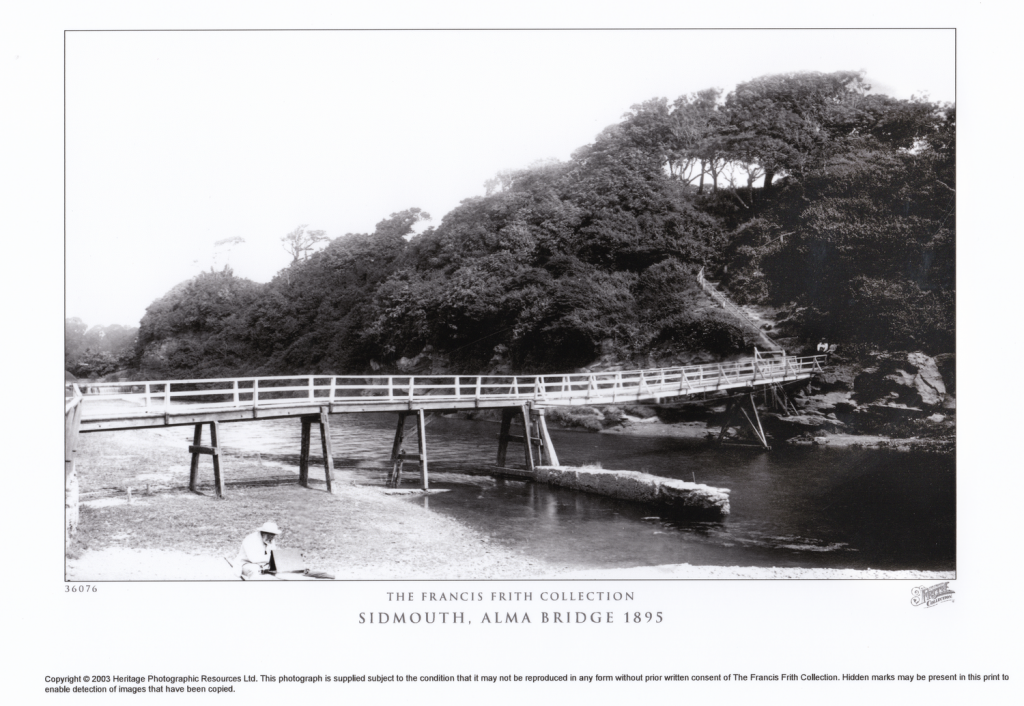

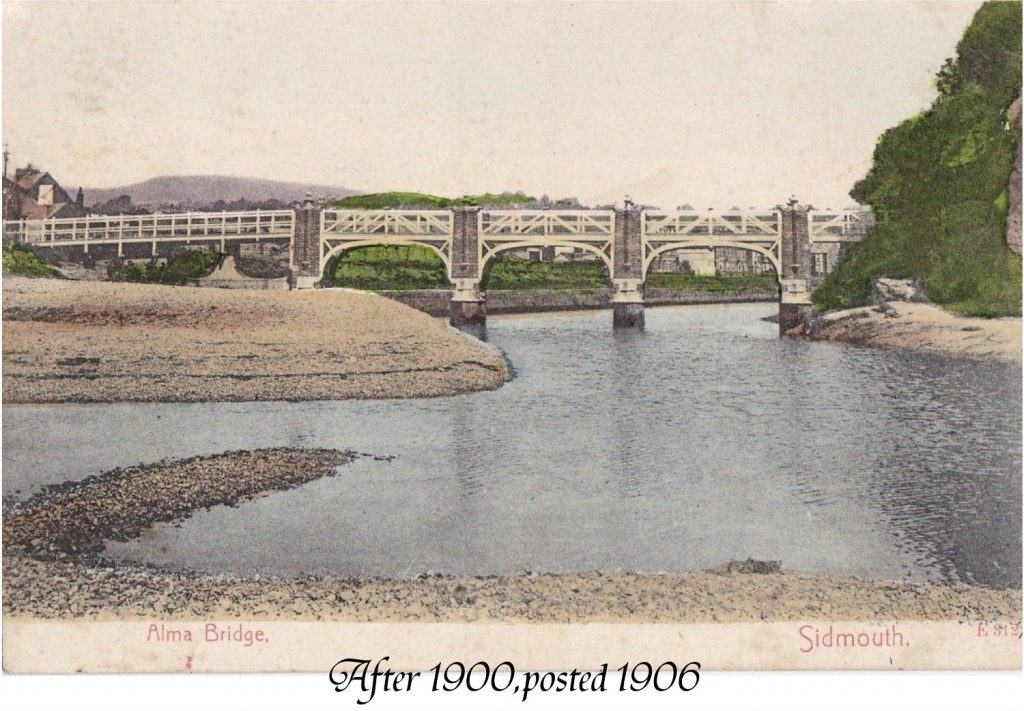
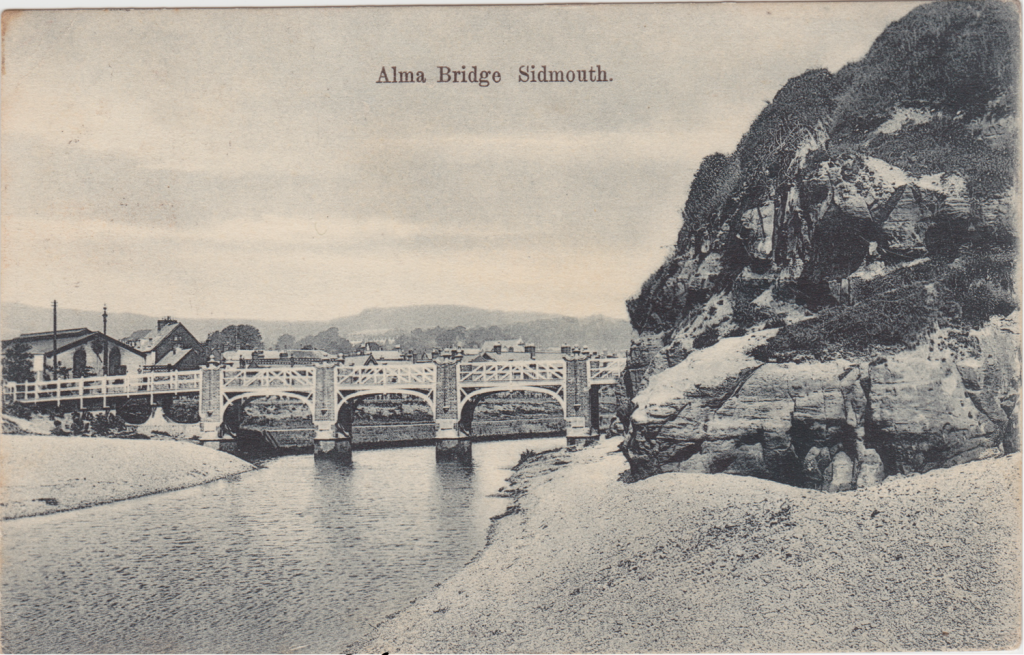


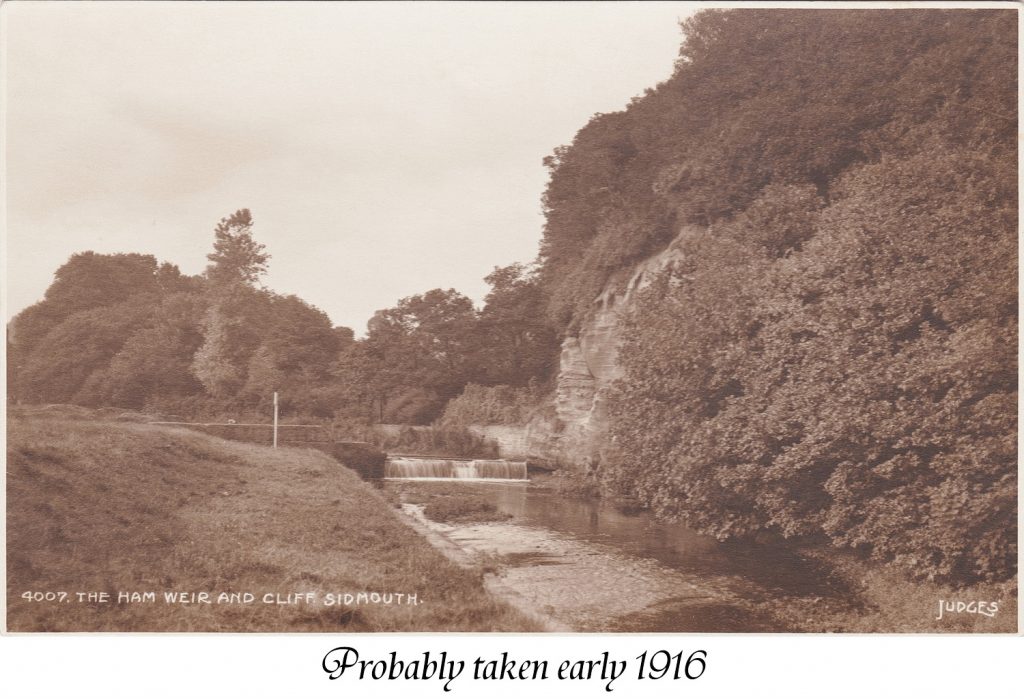



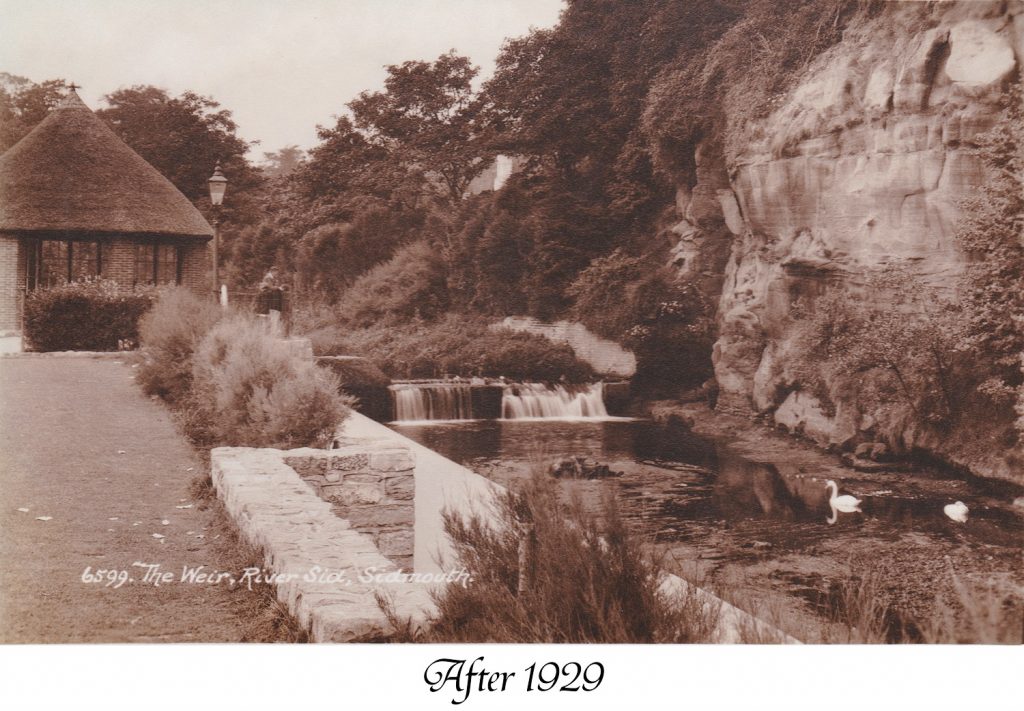

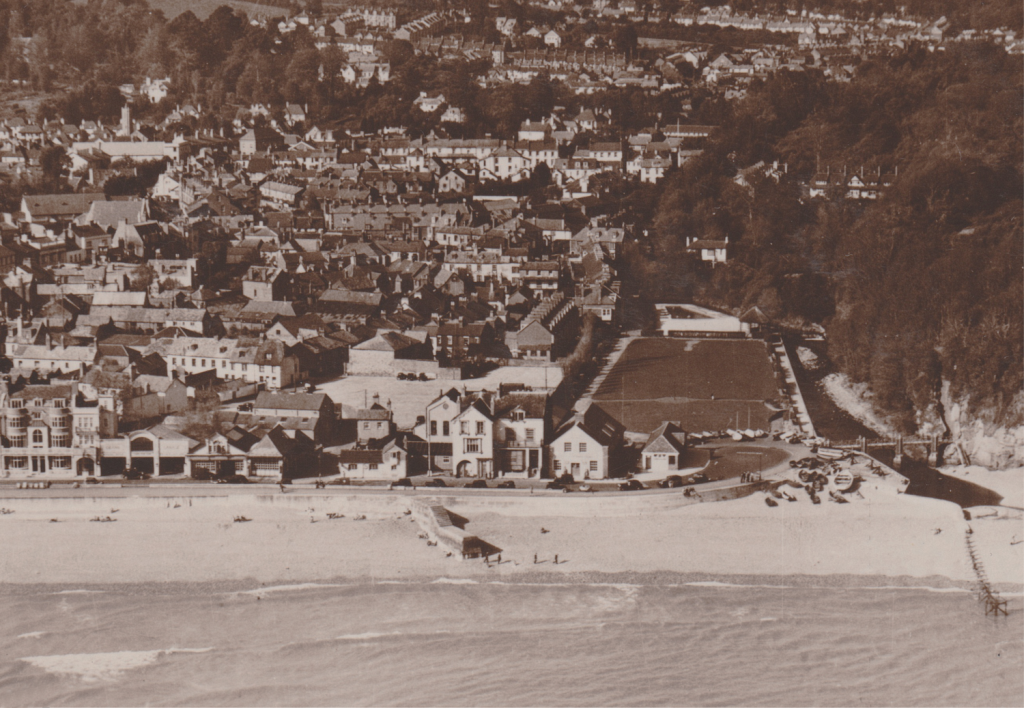
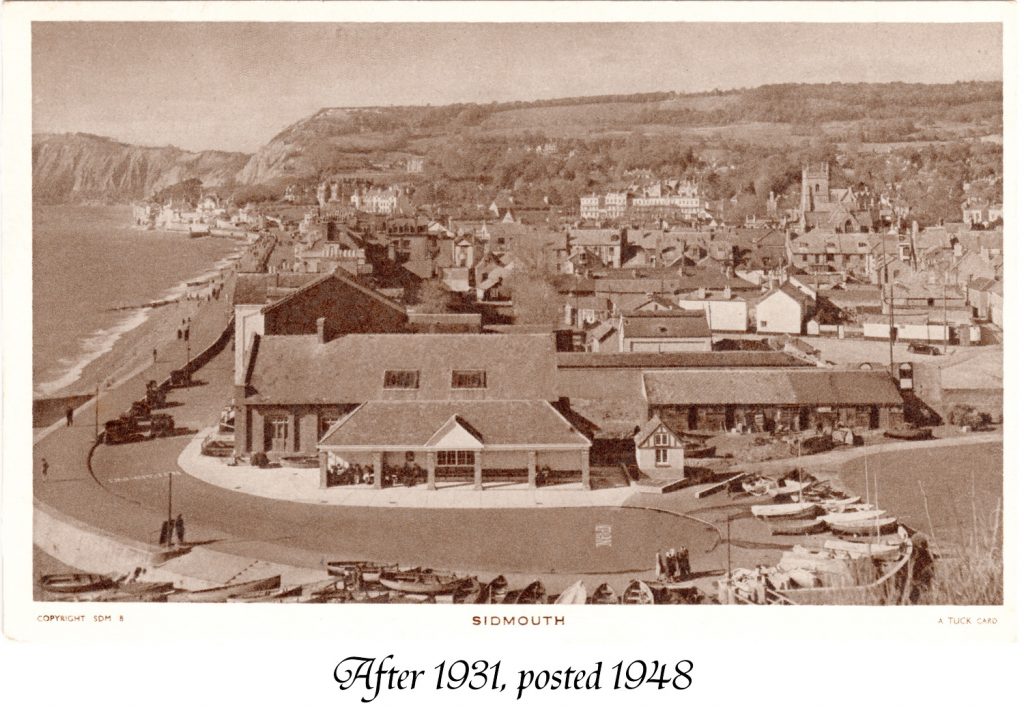
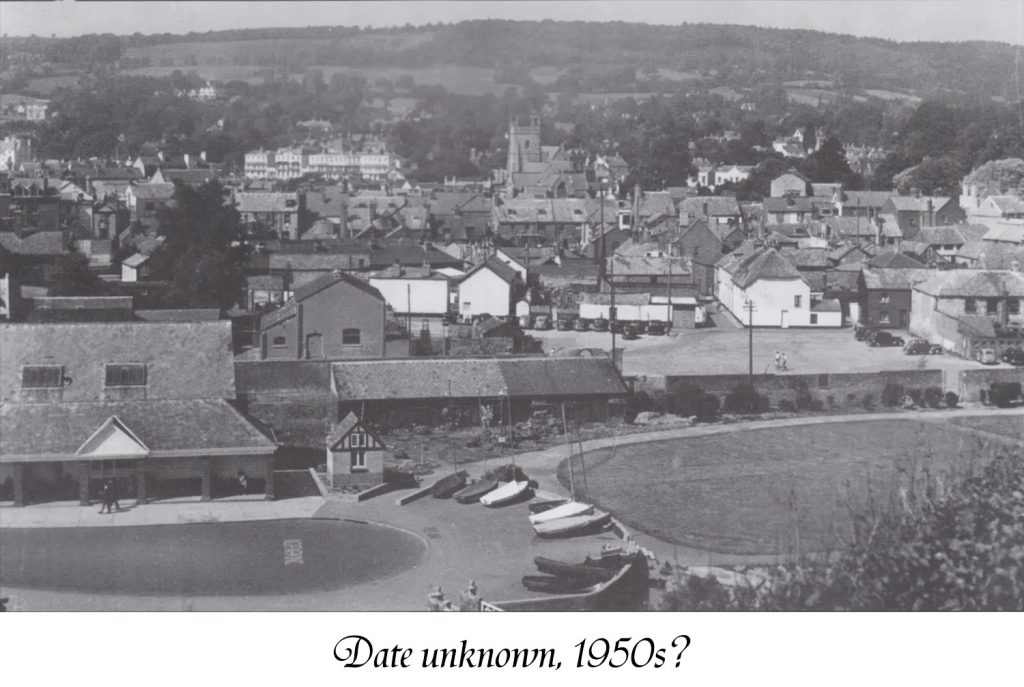

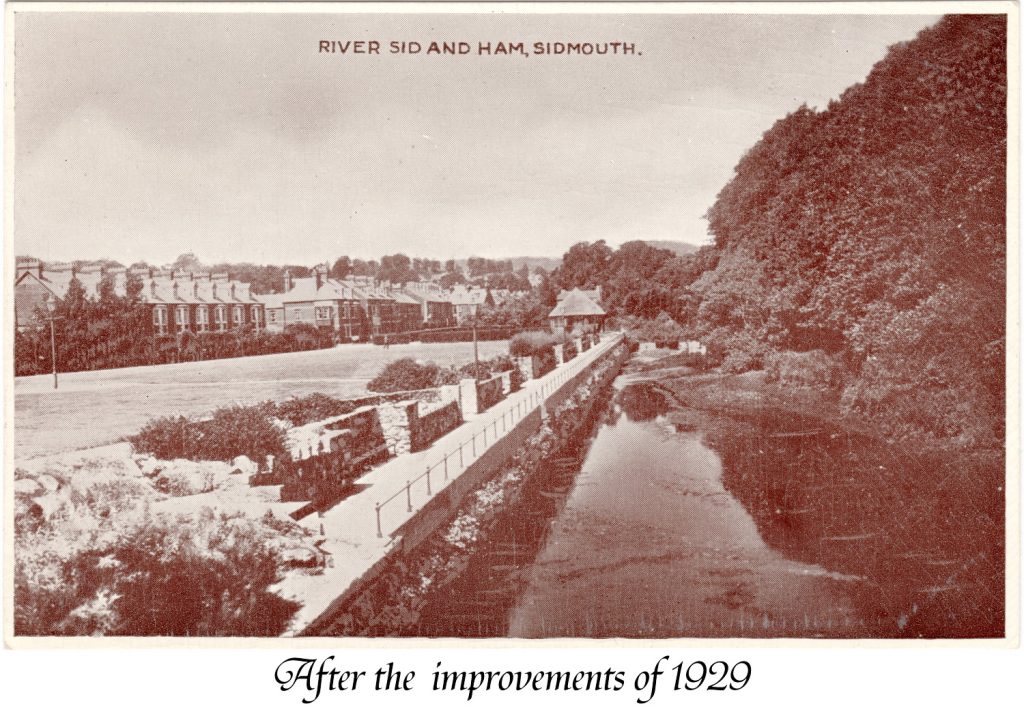
If you look carefully at the card posted in 1948 you can see a tree just behind and to the right of the Drill Hall, near Ham Lane. In the next picture this tree is taller and a building has gone.
I do not have a date for when the safety railings were erected on the riverside walk. Can anyone help?
Other pages which may be relevant are
The Ham
Ham conveyance March 1896
The extent of the Ham
Land registry documents
Sewers and sewerage.